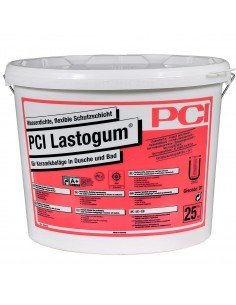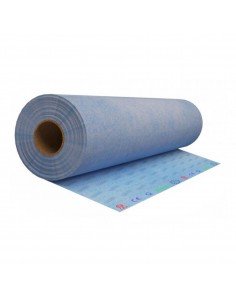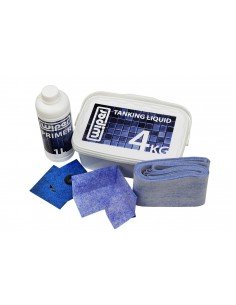- Agnes D.
- Shower drains
- 10317 views

The bathroom is the place most exposed to dampness throughout the entire home or apartment. Water and steam make it impossible to completely get rid of moisture from the bathroom. However, you can protect yourself against its negative effects. So, how to avoid problems with dampness in the bathroom?
Where to start bathroom protection against moisture?
The appropriate protection of the bathroom against the negative effects of moisture should be taken care of early on in the construction. If done later, the mold and fungus created by the moisture will quickly damage the walls. Let's also take into account that mold and fungus are not merely an aesthetic problem, but are also dangerous for our health. Before placing the tiles on the wall, it is recommended to use dampproofing. Here, we have a choice of liquid film, waterproofing mortar and a sealing compound. Before applying dampproofing, use a primer to reinforce and protect it from moisture. Liquid film is a flexible substance that is used to protect surfaces exposed to water for only a short time. However, this does not apply in the case of painted walls, since after some time the paint starts to peel off. Waterproofing mortar can be used on any type of substrate, except for mixed walls, and it is deally suited to rooms with a high degree of dampness. The sealant is a semi-liquid substance that acts like a liquid film. It protects the surface from moisture and additionally from chemical agents.
Appropriate ventilation is essential in every wet room
In every bathroom, there must be adequate ventilation system to keep the excess moisture away. Proper circulation will reduce the risk of fungal and mold growth in the bathroom. In the case of small rooms, gravity ventilation, or the ventilation grille, will be checked. It is recommended that it be located as ar as possible from the door, which will prevent the steam from entering other rooms. Additional gravity ventilators or mechanical fans can also be used. They are especially recommended for larger bathrooms. It depends on us whether they will work continuously or whether we will only use them during the bath. Sometimes it is enough to run the fan when water vapor accumulates. In addition, there should be openings in the bathroom door for air exchange between the bathroom and the rest of the house.
Give some extra tips and wet room kits
If there is a washing machine or dryer in the bathroom, it is necessary to air the premises at least twice a day for ten minutes. Baths and showers should be taken with the door closed, so it is best to install a cabin. After each bath, it is necessary to ventilate the room so that steam does not settle on the walls and furniture. In addition, wipe the walls of the cabin, bath and shower, and open the cabin/curtain to accelerate the drying process. Also, avoid leaving wet towels and clothes in the bathroom.








